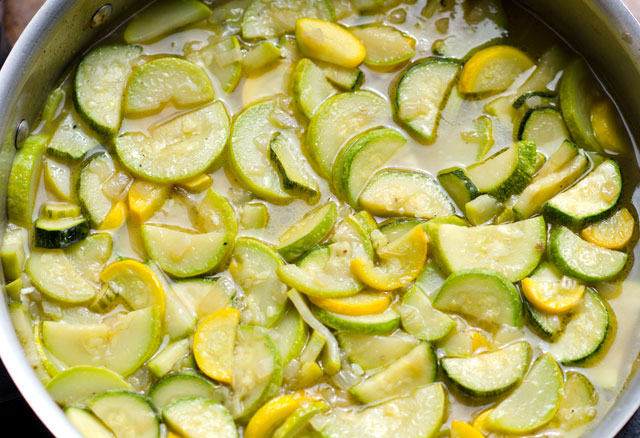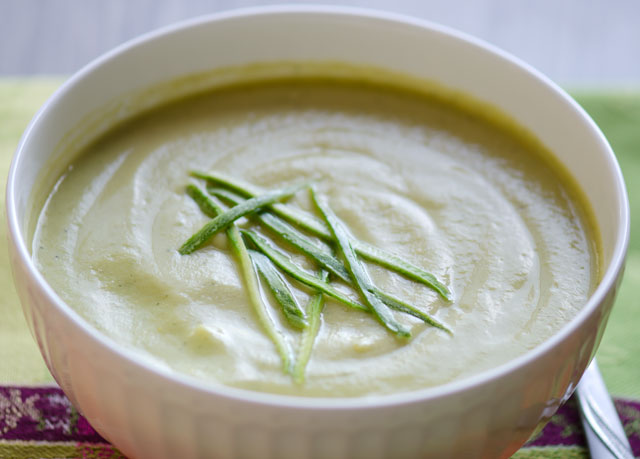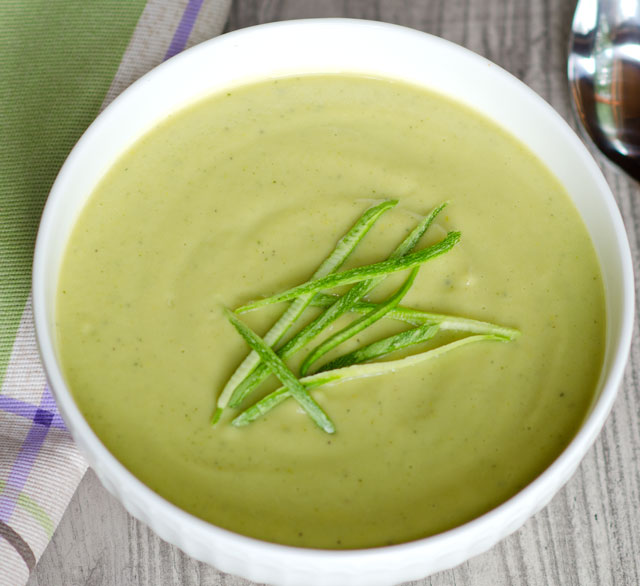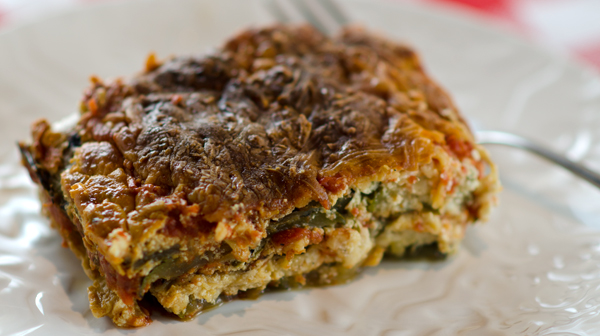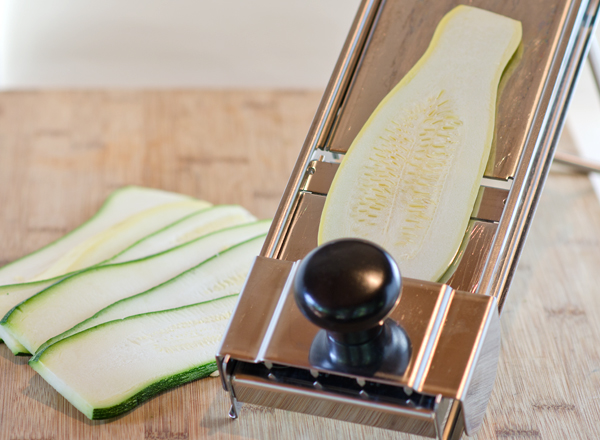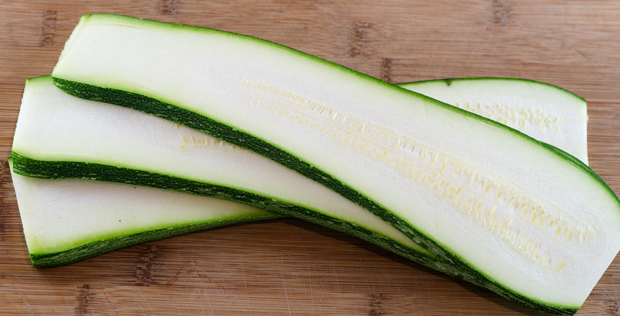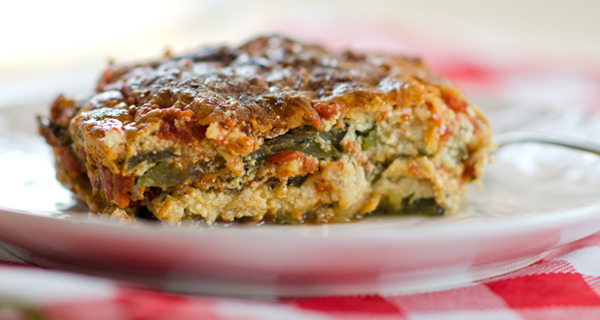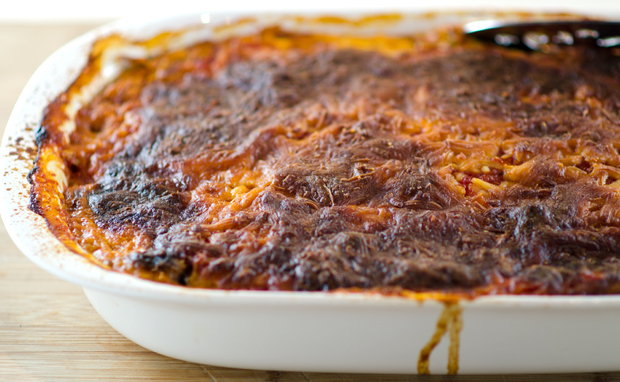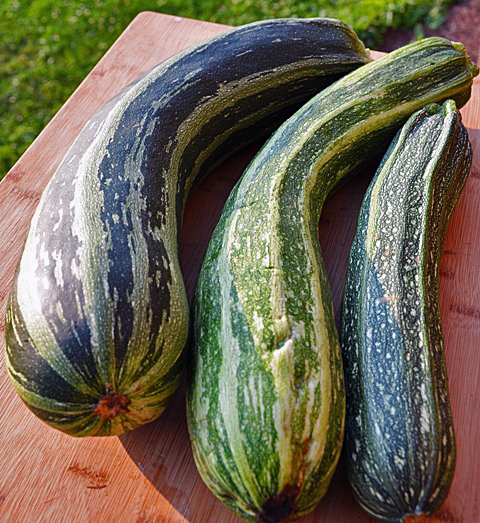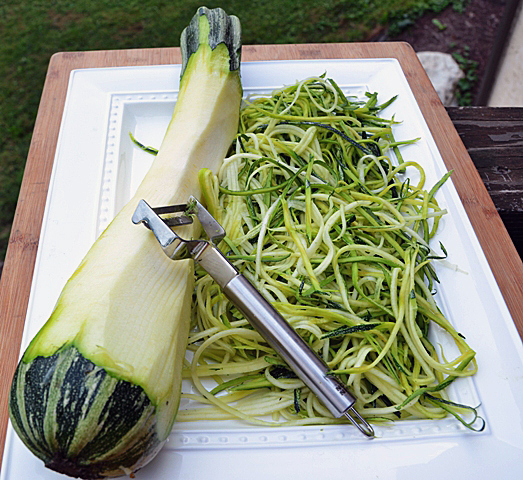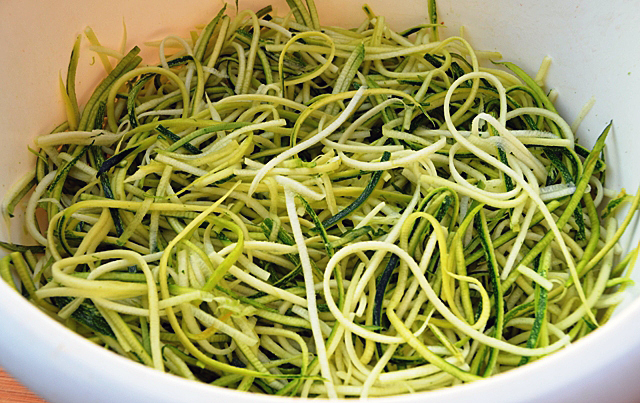A fellow shopper and I were comparing notes as we waited in line at the farmers market. “I don’t like zucchini,” she commented. I didn’t have the chance to ask her, but I am always curious to know what exactly it is that makes someone dislike a certain food. Is it the taste, the texture, the smell, did they suffer through a poor preparation of it, or perhaps a bad childhood memory?
Zucchini, in many recipes is the canvas for the flavors of what is cooked with it, garlic, basil, tomatoes, cheese. I can understand someone disliking seedy, watery baseball bat sized zucchini that is tasteless and pulpy. But just picked small to medium zucchini have a light delicate flavor and a nutty quality to them. Maybe zucchini is not a nutritional powerhouse but it is low in calories and contains folate, potassium and vitamin A.
Zucchini is at the forefront of this recipe courtesy of Grant Achatz, a surprisingly low-tech offering from one of the masters of molecular gastronomy. We had the pleasure of enjoying a multiple course meal at his restaurant, Alinea, on a trip to Chicago several years ago. No need for a refractor or an immersion circulator to master this quick and very simple recipe. This pale green soup with dark green flecks has a creamy silky taste that belies the fact that the only dairy in the soup is one tablespoon of butter. Since the flavor of the zucchini is the star, choose homegrown or farmers market zucchini. The recipe is vegetarian but could be made vegan just by replacing the butter with olive oil. Good both hot or cold, garnish the soup simply with finely shredded zucchini.

Silky Zucchini Soup
Serves 4
Ingredients
- 1T unsalted butter
- 2T extra virgin olive oil
- 1 small onion, chopped
- 1 clove of garlic, thinly sliced
- Kosher salt and pepper
- 1 1/2lbs zucchini, halved lengthwise and sliced 1/4 inch thick
- 2/3c vegetable stock or low sodium vegetable broth
- Julienned raw zucchini for garnish
Directions
- Melt the butter and olive oil in a large saucepan. Add the onion and garlic, season with salt and pepper. Cook over moderately low heat, stirring frequently, until softened, 7 to 8 minutes.
- Add the zucchini and cook, stirring frequently, until softened, about 10 minutes.
- Add the stock and 1 1/2 cups of water and bring it to a simmer; cook until the zucchini is very soft, about 10 minutes.
- Working in two batches, puree the soup in a blender until it’s silky smooth. Return the soup to the saucepan and season with salt and pepper. Serve the soup hot or chilled, garnished with julienned zucchini.

